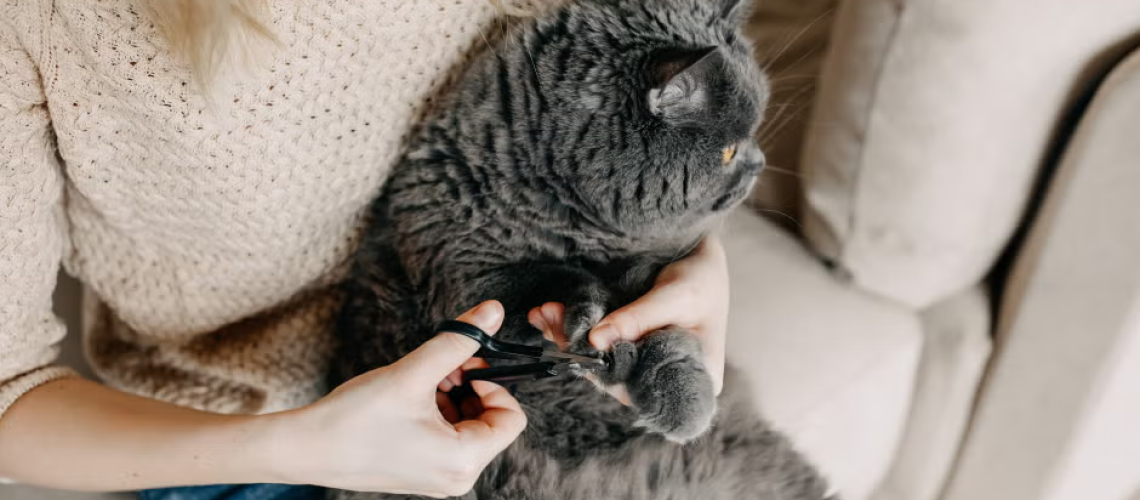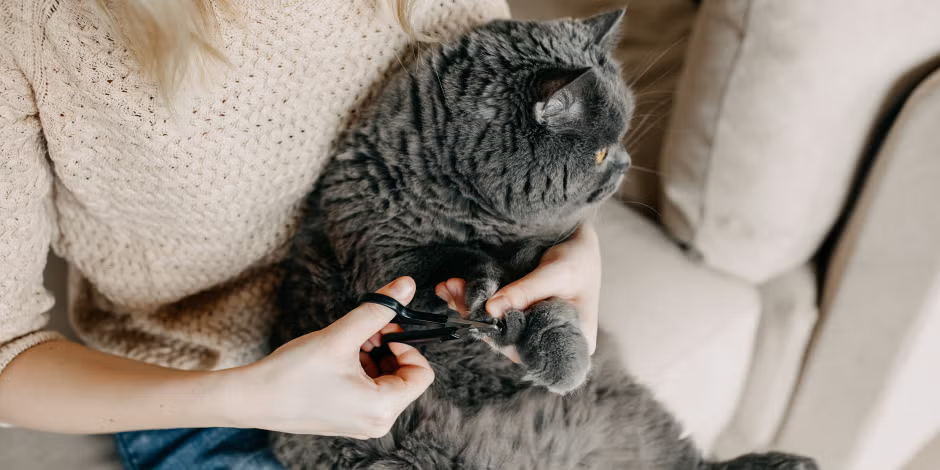When your cat climbs a tree or uses its scratching post, it may lose the outer layer of one of its claws, but don’t worry, it’s normal! Scratching is a normal part of a cat’s life; their claws have several layers, so if the outer layer comes off, there will be a new, sharp claw underneath (sometimes you’ll find the outer sheaths near their favorite scratching areas). If you have an active, healthy cat who likes the outdoors, it’s unlikely you’ll need to trim their nails. However, house cats or older cats may need grooming from time to time, and you may need to trim your cat’s nails as an essential part of their regular care.
Recommendations for clipping a cat’s nails:
Get your cat used to having their nails trimmed from an early age. A good way to start is to pretend to trim a claw, applying light pressure to your cat’s toes to expose the claw, and then praise or offer a reward.
If you’re going to trim your cat’s nails, it’s very important that you know how to do it correctly. The last thing you want is to hurt your cat or cause bleeding by cutting flesh or a sensitive area in the nail area. Your vet will be happy to demonstrate and check your technique, or if you prefer not to do it yourself, they can do it for you.
Check your cat’s nails once a week, including the “big toe” or dewclaw—the one on the inside of the paw, just below the wrist. It rarely touches the ground, so it has a tendency to overgrow—especially in adult cats 7+.
While checking your cat’s nails, also take a look at the pads of the paws and between the toes to make sure everything is in perfect condition and absolutely clean.
Cats, just like humans, can get ingrown toenails. If you suspect a claw is growing into its pad, contact your veterinarian, as it likely needs medical attention.
YOUR CAT’S WEEKLY CHECKS
Along with brushing its coat and caring for its nails, there are some additional checks you can do to ensure your cat is in perfect condition.
Check that your cat’s ears are clean and smell good. If they are dirty, smelly, red, irritated, or if your cat keeps shaking its head, contact your veterinarian. Ear mites are a common problem, especially in young cats.
Run your hands all over your cat’s body. Look for any scratches, lumps, bumps, or spots that seem bothersome. If you are concerned about anything, contact your veterinarian.
Check its eyes and nose, and contact your vet if you notice any discharge or redness.
Take a look under your cat’s tail. Its rear end should be clean. If it’s dirty or shows signs of worms or inflammation, visit your vet.
Finally, run your hand against the grain of the fur to raise the hair upward. Check the fur and skin for parasites or flea droppings (black dots or granules). You can prevent an infestation with regular flea checks, but if it’s too late, your vet will advise you on the best treatment.
Most cats don’t need constant grooming, as they do it themselves. However, it is sometimes necessary to help your cat with its hygiene and give it the care it deserves. That’s why we’re giving you some tips on how to clean your cat.
There’s nothing better than caring for a cat by showering it with love and affection, but it’s also extremely important to make these grooming recommendations become habits to maintain your feline’s well-being. At Purina, we believe that when pets and people come together, life is better, especially when the care is right.

